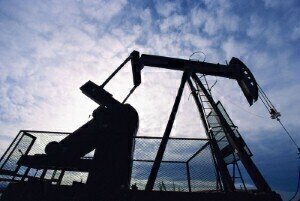Fuel for Thought
What is a Pumpjack?
Sep 21 2014
Every single day, petroleum suppliers place over 90,000 barrels of oil on the global market. But have you considered exactly how this oil is extracted from the ground?
In some cases, the process is relatively straightforward. Once a well has been drilled, oil supply flows freely to the surface - allowing it to be collected by the operator. However, this is far from the norm. When oil supply is not plentiful or easily accessible, it needs to be coaxed from the ground using a contraption known as a ‘pumpjack’.
If you’ve been to Texas, California or any other oil-rich state in the US, you may have come across a pumpjack. The pumpjack structure is somewhat iconic - characterised by its hammer-shaped ‘horse head’ bobbing up and down as it extracts oil from the well. Sitting overground and commonly found on oil belts, the pumpjack is a feat of engineering that has transformed the industry entirely.
How does a pumpjack work?
The pumpjack was devised by engineers to get every last barrel of oil from the ground. Instead of just getting to the ‘easy to reach’ oil, more stubborn supplies of liquid could be extracted too - meaning each well could reach maximum efficiency.
A pumpjack lifts liquid - typically an emulsion of crude oil and water - out of the well to be refined and then placed on the global market. Modern pumpjacks are powered by an engine known as a prime mover. Some are powered by electricity, while others in more remote locations run off natural gas. The prime mover runs a set of pulleys to the transmission, which in turn drives a pair of cranks. The horse head pumps up and down, bringing oil up to the surface via a horizontal shoot.
The influence of the pumpjack
Pumpjacks have had a largely positive effect on the petroleum industry. They extraction process has become more efficient. In many cases, a pumpjack extends the life of a well by many years, allowing operators to reach oil that would otherwise remain untapped. Traditional methods of oil extraction have been the primary and secondary methods, which, according to studies by the US Department of Energy, only exhaust between a quarter and half of a well’s oil reserves. Such profligacy has been addressed by the development of a tertiary technique, more commonly known as enhanced oil recovery (EOR). But what is exactly are the differences between the three, and why are the first two so ineffective? For more information about this topic, read: What is the Difference between Primary, Secondary & Enhanced Recovery for Oil Extraction?
Pumpjacks also facilitate low operational costs. With the use of smart technology, a pumpjack’s performance can be monitored remotely - meaning it doesn’t need to be heavily manned. For low-production oil wells, this is a major benefit - ensuring the running costs do not outstrip oil supply levels.
The output of a pumpjack varies from case to case, with estimations coming in at between 5 and 40 litres of liquid with each stroke. In reality, the output depends on many different factors. How much fluid is in the pump bore? How big is the pumpjack, and how many strokes per minute can be reached? What is the percentage of oil in the extracted liquid?
Pumpjacks are not exclusive to the petroleum industry. They are also used on a smaller scale to replace traditional hand-pumping techniques at water wells.
What Happens Next?
After oil has been mined from the Earth or the sea, it remains in a crude state. This can be either heavy, light or medium, depending on the type of biomass, the level of pressure and the intensity of the heat that went into its composition. Before it can be used as a viable product, which could be anything from petrol to plastic to ink, it must first be sent to a refinery to be processed. To learn more about this topic, read: An Introduction to Oil Refineries.
Digital Edition
PIN 25.1 Feb/March
March 2024
In This Edition Safety - The technology behind the ION Science Tiger XT - Safety with ammonia and LOHCs as hydrogen carriers Analytical Instrumentation - Discussion on new tribology te...
View all digital editions
Events
Apr 22 2024 Hannover, Germany
Apr 22 2024 Marrakech, Morroco
Apr 22 2024 Muscat, Oman
Apr 22 2024 Rotterdam, Netherlands
Apr 23 2024 Singapore


















